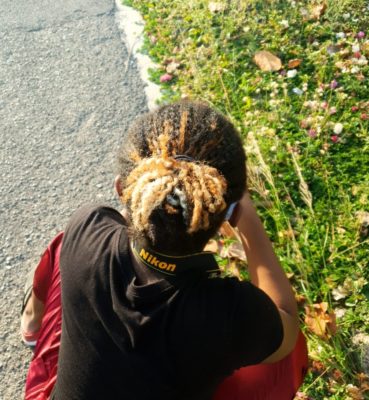
A.L. Bowley, a statistician, in more words or less, defines statistics as the science of counting. Counting in most cases is often reduced to a numerical value. I assume so it may be universally understood, comprehended and scientifically proven and tested, after all numbers do not lie.
However to truly understand the value of a number you must understand what it represents. When we think of numbers it may be easy to first reflect on those that pester us the most: bills, fees, debit, and credit. Oftentimes numbers are linked to a human experience and given its meaning in said way. But why am I saying all of this?
Well reader if it is that we as the general public are to best utilize the statistics presented to us, it may help if we first are able to interact with and understand the source material; the beings in which these numbers would later represent and reflect. Simply put reader the point of this feature is to better understand the person behind the statistic, which is to learn of a personal experience of disrespect within the workplace as told through interview quotations.
To begin I would like to define some key terms that affect the context of this feature. Firstly Abbii-Gale Stephenson (A.S.), pronoun, a living breathing person, sound of mind, of African and Cuban descent, dark in complexion, human being, and subject of this feature. Second, the workplace, this is a place where people work and where work is done.
On the hunt for personal encounters with disrespect in the office, I posed the following question to A.S.

“Have you ever experienced racism, colorism or classism in the workplace?”
In the opening, she revealed that in 2016 her first encounter with racism in Jamaica was actually her first encounter with racism overall. This occurred while she was working at a well-known bookstore in Kingston Jamaica; there she was a returning summer worker and well known by her fellow employees. Her tale commences.
“It was my last year, not because of the racism but the fact I had sixth form it was always just a summer job, I always wanted to do something more than work at a bookstore the other year”. She continues…
“While there with a colleague, a customer comes in, she is Caucasian and elderly.”
“She appears to be very miserable at this point, so mi seh let me try tackle her, ‘cause everybody knows me oddly to be a very friendly person.” Building the story she goes on…
“I went and I gave her some friendly vibes…”
“Hi, how are you?” “May I assist you today?” “How may I help?” To which the woman in question declines the offer.
“She’s like no I don’t want any help. So I’m like okay no problem, so then I walk off.” Rationalizing A.S. adds,
“I didn’t take it as anything much, probably just her having a bad day.”
“Then she comes back and asks where the gift bags are, and I’m like sure I can help you. And she’s like no I don’t want you to help me you’re black”
“So I’m like excuse me?”
“She said no I don’t want any filthy black Jamaicans to help me, so internally I ponder what this ladies deal is? Verbally I respond okay no problem.” A.S continues,
“I pointed her to it saying they are right there, and she said reach for them.”
“I said no, you said you don’t want my help. I will try to get somebody to assist you.” To which the woman reiterates…
“I don’t want anybody black to do it.”
A.S. continues the recollection,
“At this time the lightest girl there helped her.”
“And then the lady is raining havoc! She’s cursing and saying how disrespectful I was. How I didn’t want to help her.”
“I reminded her that I offered my assistance and she rejected it and stated I was too black to help her.”

Going more in detail A.S informsme that at this point she is “…creating a big scene.” She went on to explain the significance of this. She reveals that since it was close to closing hours that there were a lot of people outside at that time. To add to that the doors of the establishment were also open to allow the retrieval and loading of the delivered goods. She adds…
“They were wondering what’s happening. And I’m not going to lie to you I did feel some type of way.”
She discloses that this is based on the fact that the woman was still creating a scene at that point and she feared what she explains in her own words as…
“People knowing Jamaicans are just going to come in and hear that I was disrespectful and believe her.”
“She’s not going to repeat the racist thing she said.” A sad plot twist for our heroin or so I thought in my head at this point until she revealed,
“…but the co-workers in the store heard. “ Routing for her, objectively of course I was enticed to hear what happened next. She added,
“Same time, thankfully, my manager was nearby and he heard, and he told her I’m sorry but you’re going to have to leave.”
“She wasn’t leaving at the time and she was cursing on and on and the security had to get involved and then she left.” To summarize she closes.
“I was just shocked honestly, I expect that in a foreign country, I expect colorism here not blatant racism, and it made me upset, not sad, but upset that I couldn’t do anything about it.”
Abbii-Gale Stephenson, when a survey is summarized, is a number, a statistic; and what exactly could we gather from this statistic? Her numerical value here represents numerous things in this instance, all of which are dependent on the question posed.
Have you ever experienced disrespect in the workplace? In what way were you disrespected? How was the situation handled? Where your superiors made aware of this disrespect? How did this experience make you feel in that moment? How has the experience shaped your perception and attitude to work since then?

To reiterate, when we think of numbers it may be easy to first reflect on those that pester us the most. And this reader isn’t often a bad thing. It is through research; data collection and analysis, that we are able to not only identify a problem area, like say disrespect in the workplace but then test the hypothesis that surrounds that topic. In conclusion, statistics are a great way to universally communicate one’s findings. The quantitative approach will always be there to communicate the what. However, my dear reader, it is in the qualitative research methods, like this interview, that we go beyond the ‘what’, and understand the ‘who’. Then may the numbers, truly, have value.










